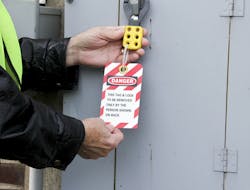There are times when it seems logical to take a shortcut here or there. For example:
- You’re on a customer’s site and going through a complete lockout/tagout would put you into rush hour traffic when you leave but an abbreviated version would allow you to leave just ahead of that traffic mess.
- A large area of production is without power because you’re replacing a circuit breaker. The production manager has visited you three times and the plant manager has visited you twice. Even the plant engineer has asked you if there’s any way to speed it up. You could save time by having operators close all the local disconnects for the utilization equipment before you energize this breaker, rather than closing the breaker and then closing the local disconnects one at a time.
- While you’re replacing a motor, the production manager tells you if they don’t get the order out today they will lose the customer and that will be all your fault. You could avoid the time-consuming hassle with the safety sling and also save time by making up the motor leads without torquing the bolts or using the recommended lead insulation kit/process.
The thing is, short-cuts can produce disasters:
- An incomplete lockout/tagout can easily result in injury or fatality.
- Closing a breaker under load is something you seriously want to avoid, regardless of any time-savings. It’s a quick way to create a fireball, and that’s not good for anybody.
- It’s not your fault if the company loses the customer over this one delay. Dropping that motor and bending the shaft because you didn’t take time to sling it properly will mean even more delay, and someone can get hurt also. Always make motor leads correctly; that is the only way to ensure they are safe.
About the Author

Mark Lamendola
Mark is an expert in maintenance management, having racked up an impressive track record during his time working in the field. He also has extensive knowledge of, and practical expertise with, the National Electrical Code (NEC). Through his consulting business, he provides articles and training materials on electrical topics, specializing in making difficult subjects easy to understand and focusing on the practical aspects of electrical work.
Prior to starting his own business, Mark served as the Technical Editor on EC&M for six years, worked three years in nuclear maintenance, six years as a contract project engineer/project manager, three years as a systems engineer, and three years in plant maintenance management.
Mark earned an AAS degree from Rock Valley College, a BSEET from Columbia Pacific University, and an MBA from Lake Erie College. He’s also completed several related certifications over the years and even was formerly licensed as a Master Electrician. He is a Senior Member of the IEEE and past Chairman of the Kansas City Chapters of both the IEEE and the IEEE Computer Society. Mark also served as the program director for, a board member of, and webmaster of, the Midwest Chapter of the 7x24 Exchange. He has also held memberships with the following organizations: NETA, NFPA, International Association of Webmasters, and Institute of Certified Professional Managers.
